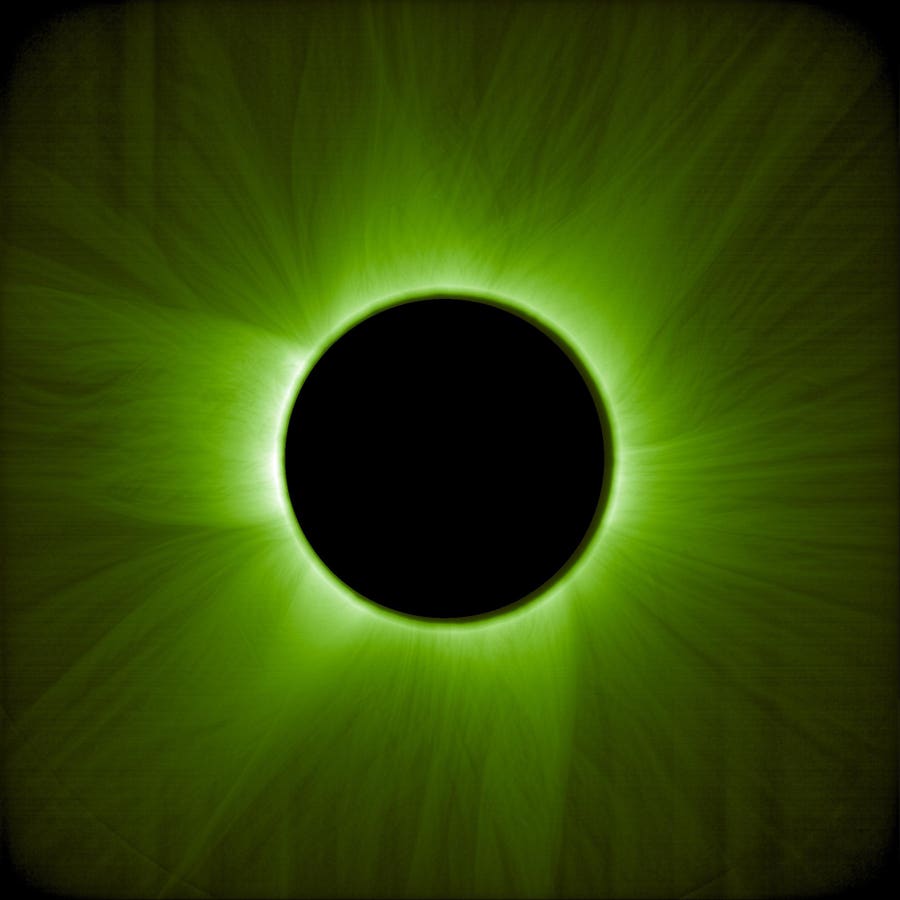The Sun’s inner corona appears greenish in this image taken on 23 May 2025 by the ASPIICS … More
The European Space Agency has published the first spectacular images of an artificial solar eclipse created in orbit. The pioneering images are from its Proba-3 mission, which features two satellites that fly in formation with millimeter precision, allowing scientists to study the sun’s corona without waiting for rare natural eclipses. It’s also the world’s first precision formation flying mission.
Launched on December 5, 2024, from India, Proba-3 is a two-year mission during which a total solar eclipse will be created for six hours in every 19.6-hour orbit. “Our ‘artificial eclipse’ images are comparable with those taken during a natural eclipse,” said Andrei Zhukov, Principal Investigator for ASPIICS at the Royal Observatory of Belgium.
The Sun’s inner corona, coloured artificially to appear violet, in an image taken on 23 May 2025 by … More
“The difference is that we can create our eclipse once every 19.6-hour orbit, while total solar eclipses only occur naturally around once, very rarely twice a year. On top of that, natural total eclipses only last a few minutes, while Proba-3 can hold its artificial eclipse for up to 6 hours.”
One satellite, the Occulter, acts as an artificial moon, blocking the sun’s light using a 1.4-meter-diameter disc. It flies exactly 150 meters in front of the Coronagraph satellite, covering the bright disc of the sun and casting an 8 cm shadow across onto its imager — mimicking how a total solar eclipse works on Earth.
The Sun’s inner corona, coloured artificially to appear dark green, in an image taken on 23 May 2025 … More
Such a feat of engineering is essential to capture images of the sun’s corona — the outer atmosphere of the sun. Only during a total solar eclipse can the corona be glimpsed from Earth’s surface, and even then, only for a few minutes from any one location.
The solar corona is a mysterious place. It reaches temperatures of over two million degrees Fahrenheit, significantly hotter than the sun’s surface. Understanding this mysterious layer is essential for solar physicists because it’s the origin of solar wind and space weather that can impact Earth’s communications and power systems.
The two spacecraft of Proba-3 fly in precise formation about 150 m apart to form an external … More
The mission is based on some remarkable engineering. The Proba-3 satellites follow a highly elliptical 19.6-hour orbit ranging from 373 miles (600 km) at perigee to 37,000 miles (60,000 km) at apogee, flying in precision formation only near apogee. At apogee, they’re as far away from Earth’s gravitational force and atmospheric drag, enabling them to fly in formation autonomously, achieving eclipse-like conditions for six hours.
The images you see here are created from three exposures and were processed by the ASPIICS Science Operations Centre at Belgium’s Royal Observatory. “Each full image – covering the area from the occulted sun all the way to the edge of the field of view – is actually constructed from three images,” said Zhukov. “The difference between those is only the exposure time, which determines how long the coronagraph’s aperture is exposed to light. Combining the three images gives us the full view of the corona.”
The paired Proba-3 satellites will have a highly elliptical orbit with an apogee (or top of orbit) … More
ESA has an open data policy, with all uncalibrated data and images available online to scientists and eclipse enthusiasts alike. Proba-3’s mission will last two years, during which approximately 1,000 hours of solar corona images will be gathered. Once it runs out of propellant, it will de-orbit and burn up in Earth’s atmosphere.
Wishing you clear skies and wide eyes.









